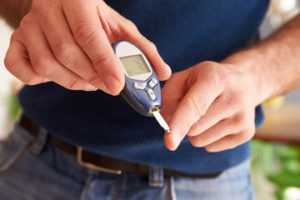Diabetic wound treatment – five basic steps
 The prediction for the future of diabetes is that the disease will continue to grow. In fact, it’s estimated that more than 550 million people worldwide will have the disease by 2030. And about one-fourth of those patients will develop foot ulcers related to their disease. Diabetic foot ulcers often require what is called “advanced” wound treatment. The bright spot in this story is that at Central Jersey Surgeons, we can provide the specialized wound treatment that can help prevent complications and achieve healing. Call for an appointment today: (908) 722-0030.
The prediction for the future of diabetes is that the disease will continue to grow. In fact, it’s estimated that more than 550 million people worldwide will have the disease by 2030. And about one-fourth of those patients will develop foot ulcers related to their disease. Diabetic foot ulcers often require what is called “advanced” wound treatment. The bright spot in this story is that at Central Jersey Surgeons, we can provide the specialized wound treatment that can help prevent complications and achieve healing. Call for an appointment today: (908) 722-0030.
1. Assessing the wound
Diabetic wounds fall into three categories: neuropathic, ischemic and neuroischemic. By properly identifying the type of wound you have, we can create the proper wound treatment plan that can help avoid long-term complications or even amputation.
2. Removing tissue
This is the removal of any necrotic tissue from the wound, which reduces pressure, stimulates healing and enables us to inspect underlying tissue. This also helps with with drainage and increases the effectiveness of the wound dressing.
3. Controlling infection
Diabetic wound infections are a serious health concern, so more aggressive infection control is used. Even mild infections can call for the use of both oral and topical antibiotics. Even wound dressings will contain antimicrobial agents to help fight infection. Advanced wound care dressings may also include silver, iodine, medical-grade honey or polyhexamethylene biguanide (PHMB), which all work to improve healing by keeping the wound moist.
4. Balancing moisture environment
The proper wound dressing is designed to maintain a balanced moisture — not too wet or too dry — and allow the wound to drain and heal properly. The location of the wound will also be taken into consideration by your clinician when they choose a dressing.
5. Reducing pressure
Whether you suffer from foot or leg ulcer, reducing pressure is key to preventing complications. The application of a special cast may be used to redistribute pressure evenly throughout the lower leg, and this can help reduce healing time. Other devices may also be used as appropriate to your case.

